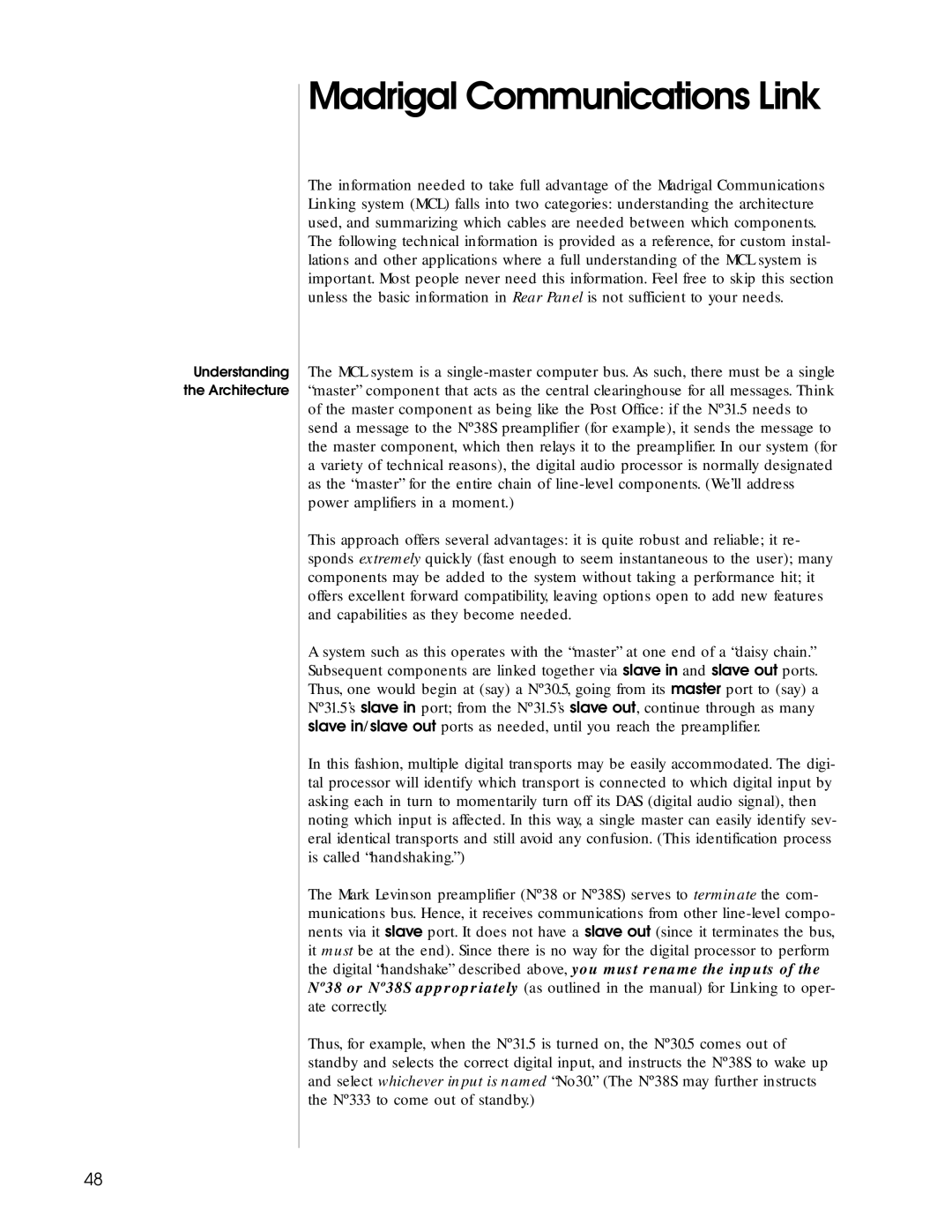Understanding the Architecture
Madrigal Communications Link
The information needed to take full advantage of the Madrigal Communications Linking system (MCL) falls into two categories: understanding the architecture used, and summarizing which cables are needed between which components. The following technical information is provided as a reference, for custom instal- lations and other applications where a full understanding of the MCL system is important. Most people never need this information. Feel free to skip this section unless the basic information in Rear Panel is not sufficient to your needs.
The MCL system is a
This approach offers several advantages: it is quite robust and reliable; it re- sponds extremely quickly (fast enough to seem instantaneous to the user); many components may be added to the system without taking a performance hit; it offers excellent forward compatibility, leaving options open to add new features and capabilities as they become needed.
A system such as this operates with the “master” at one end of a “daisy chain.” Subsequent components are linked together via slave in and slave out ports. Thus, one would begin at (say) a Nº30.5, going from its master port to (say) a Nº31.5’s slave in port; from the Nº31.5’s slave out, continue through as many slave in/slave out ports as needed, until you reach the preamplifier.
In this fashion, multiple digital transports may be easily accommodated. The digi- tal processor will identify which transport is connected to which digital input by asking each in turn to momentarily turn off its DAS (digital audio signal), then noting which input is affected. In this way, a single master can easily identify sev- eral identical transports and still avoid any confusion. (This identification process is called “handshaking.”)
The Mark Levinson preamplifier (Nº38 or Nº38S) serves to terminate the com- munications bus. Hence, it receives communications from other
Thus, for example, when the Nº31.5 is turned on, the Nº30.5 comes out of standby and selects the correct digital input, and instructs the Nº38S to wake up and select whichever input is named “No30.” (The Nº38S may further instructs the Nº333 to come out of standby.)
48
